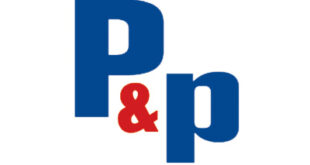The latest analysis from Smithers Pira has identified six key technology developments that will fuel new business models and revenue streams in world print markets during the next 10 years.
With the state-of-the-art in print technology on show at drupa 2016 the Post-drupa Technology Forecast for Print and Printed Packaging to 2026 report analyses these and contextualises them within a print market that will undergo profound changes across the next decade. The six trends identified by Smithers analysis are:
- The arrival of more high-quality, high-performance, reliable industrialised inkjet printers, capable of handling an increasingly diverse range of substrates.
- The evolution of highly autonomous litho print systems enabling higher throughput and cutting labour costs.
- The refocusing of many manufacturers to develop print solutions for packaging, particularly value-adding toner and inkjet options. This is being met by product launches in consumables – inks, varnishes, paper and other substrates – to match this new emphasis on packaging.
- A new interest in enhanced range of print embellishment products and processes, to add luxury appearance and better tactile effects to printed products.
- The evolution of more sophisticated workflow software to allow print service providers to accept and manage the more numerous and shorter run jobs that are characterising modern print markets, with minimal operator input.
- The pending further commercialisation of functional print engines for additive manufacturing (3D print) and printing electronics.
Report author Dr Sean Smyth said: “End consumer preferences are changing and this is causing turmoil in many print sectors. Particularly hard hit are publication rotogravure and web offset – commercial, newspaper, book and continuous stationery presses.
“Only flexo is really growing in analogue print, and this is from its packaging. Sheetfed litho is overall fairly stable, with growth in packaging as some commercial demand is eroded. These trends were echoed in the exhibitors at drupa providing many new packaging and label solutions, both analogue and (particularly) digital.”
Smithers’ analysis shows that while in 2026 many print formats will be broadly to their 2016 iterations, the routes to market will be different, with an emphasis on making production methods more efficient, and lowering overall environmental impacts.
Understanding the application and full future potential of new equipment is vital to staying competitive as the print market undergoes profound change. This will allow the enhancement of many printed materials be versioned, making them more relevant and targeted to the consumer, positioning them to compete with other emerging media channels.
 Printwear & Promotion The Total Promotional Package
Printwear & Promotion The Total Promotional Package




